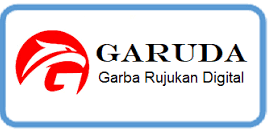LITERATURE REVIEW: KOMUNIKASI SEBAGAI FAKTOR PENTING DALAM PENGEMBAGAN PERANGKAT LUNAK
DOI:
https://doi.org/10.34151/technoscientia.v15i2.4261Keywords:
Communication, Requirement Engineering, Software EngineeringAbstract
Sejumlah studi mencatat bahwa persentase kumulatif kegagalan sebuah proses pengembangan perangkat lunak disebabkan oleh kegagalan mengantisipasi spesifikasi kebutuhan. Untuk itu proses pemenuhan kebutuhan rekayasa perangkat lunak menjadi salah satu proses terpenting dalam pembuatan perangkat lunak. Pemenuhan persyaratan kebutuhan sistem seorang pengguna seringkali dipengaruhi oleh kemampuan, pemahaman dan komunikasi yang berbeda dengan cara berpikir dari personil pengembangan sistem. Pada penelitian ini, peneliti mengangkat topik tentang aspek komunikasi dalam rekayasa kebutuhan perangkat lunak. Peneliti mengkaji makalah - makalah dari penelitian terdahulu untuk merujuk pada suatu kesimpulan tentang aspek komunikasi pada proses pemenuhan kebutuhan perangkat lunak. Pada penelitian ini mengacu pada beberapa sudut pandang, yaitu : skala besaran proyek pemenuhan kebutuhan rekayasa perangkat lunak, metode pemenuhan kebutuhan rekayasa perangkat lunak dan juga bidang implementasi rekayasa perangkat lunak. Hasil dari penelitian ini menyatakan bahwa aspek komunikasi penting untuk proses pemenuhan kebutuhan perangkat lunak yang mempengaruhi keberhasilan proyek perangkat lunak.
References
Ågren, P., Knoph, E., & Berntsson Svensson, R. (2022). Agile software development one year into the COVID-19 pandemic. Empirical Software Engineering, 27(6). https://doi.org/10.1007/s10664-022-10176-9
Ahimbisibwe, A., Cavana, R. Y., & Daellenbach, U. (2015). A contingency fit model of critical success factors for software development projects: A comparison of agile and traditional plan-based methodologies. Journal of Enterprise Information Management, 28(1), 7–33. https://doi.org/10.1108/JEIM-08-2013-0060
Al-Ani, B., & Edwards, H. K. (2008). A comparative empirical study of communication in distributed and collocated development teams. Proceedings - 2008 3rd IEEE International Conference Global Software Engineering, ICGSE 2008, 35–44. https://doi.org/10.1109/ICGSE.2008.9
Alenezi, H., Tarhini, A., & Sharma, S. K. (2015). Development of quantitative model to investigate the strategic relationship between information quality and e-government benefits. Transforming Government: People, Process and Policy, 9(3), 324–351. https://doi.org/10.1108/TG-01-2015-0004
Aveyard, H. (2014). Doing literature review in health and social care: A practical guide (ed.3). New York: McGraw-Hill Companie
Bostrom, R. P. (1989). Successful application of communication techniques to improve the systems development process. Information and Management, 16(5), 279–295. https://doi.org/10.1016/0378-7206(89)90005-0
Elizabeth Bjarnason, K. W. and B. R. (2011). Requirements are slipping through the gaps — A case study on causes & effects of communication gaps in large-scale software development. 2011 IEEE 19th International Requirements Engineering Conference. Retrieved from https://ieeexplore.ieee.org/abstract/document/6051639
Hornik, S., Chen, H. G., Klein, G., & Jiang, J. J. (2003). Communication skills of IS providers: An expectation gap analysis from three stakeholder perspectives. IEEE Transactions on Professional Communication, 46(1), 17–34. https://doi.org/10.1109/tpc.2002.808351
Korkala, M., Abrahamsson, P., & Kyllönen, P. (2006). A Case Study on the Impact of Customer Communication on Defects in Agile Software Development. Retrieved from http://agilemanifesto.org/principles.html
Korkala, M., & Maurer, F. (2014). Waste identification as the means for improving communication in globally distributed agile software development. Journal of Systems and Software, 95, 122–140. https://doi.org/10.1016/j.jss.2014.03.080
Kosasi, S., & Kuway, S. M. (2012). Studi Analisis Persyaratan Kebutuhan Sistem Dalam Menghasilkan Perangkat Lunak Yang Berkualitas. Sisfotenika, 2(1), 1–10. Retrieved from http://sisfotenika.stmikpontianak.ac.id/index.php/ST/article/view/58
Kusumasari, T. F., Sastramihardja, H., Surendro, K., & Supriana, I. (n.d.). FAKTOR PERILAKU MANUSIA DALAM KOLABORASI PENGEMBANGAN PERANGKAT LUNAK.
Lenberg, P., Feldt, R., & Wallgren, L. G. (2015). Human factors related challenges in software engineering - An industrial perspective. Proceedings - 8th International Workshop on Cooperative and Human Aspects of Software Engineering, CHASE 2015, 43–49. https://doi.org/10.1109/CHASE.2015.13
Melnik, G., & Maurer, F. (n.d.). Direct Verbal Communication as a Catalyst of Agile Knowledge Sharing.
Niinimäki, T., Piri, A., Lassenius, C., & Paasivaara, M. (2010). Reflecting the choice and usage of communication tools in GSD projects with media synchronicity theory. Proceedings - 5th International Conference on Global Software Engineering, ICGSE 2010, 3–12. https://doi.org/10.1109/ICGSE.2010.11
Petersen, L. S., Bertelsen, P., & Bjørnes, C. (2013). Cooperation and communication challenges in small-scale eHealth development projects. International Journal of Medical Informatics, 82(12). https://doi.org/10.1016/j.ijmedinf.2013.03.008
Pikkarainen, M., Haikara, J., Salo, O., Abrahamsson, P., & Still, J. (2008). The impact of agile practices on communication in software development. Empirical Software Engineering, 13(3), 303–337. https://doi.org/10.1007/s10664-008-9065-9
Randolph, J. J. (2009). A guide to writing the dissertation literature review. Practical Assessment, Research and Evaluation, 14(13).
Roberts, T. L., Cheney, P. H., & Sweeney, P. D. (2015). Project Characteristics and Group Communication: An Investigation. Writing and Speaking in the Technology Professions: A Practical Guide: Second Edition, 45(2), 336–350. https://doi.org/10.1002/9781119134633.ch58
Shafiq, M., Zhang, Q., Akbar, M. A., Kamal, T., Mehmood, F., & Riaz, M. T. (2020). Towards successful global software development. ACM International Conference Proceeding Series, 445–450. https://doi.org/10.1145/3383219.3383283
Shafiq, S., Inayat, I., & Abbas, M. (2019). Communication Patterns of Kanban Teams and Their Impact on Iteration Performance and Quality. Proceedings - 45th Euromicro Conference on Software Engineering and Advanced Applications, SEAA 2019, 164–168. https://doi.org/10.1109/SEAA.2019.00033
Tam, C., Moura, E. J. da C., Oliveira, T., & Varajão, J. (2020). The factors influencing the success of on-going
agile software development projects. International Journal of Project Management, 38(3), 165–176. https://doi.org/10.1016/j.ijproman.2020.02.001
Wager, E., & Wiffen, P. J. (2011). Ethical issues in preparing and publishing systematic reviews. Journal of Evidence-Based Medicine, 4(2), 130–134. https://doi.org/10.1111/j.1756-5391.2011.01122.x







